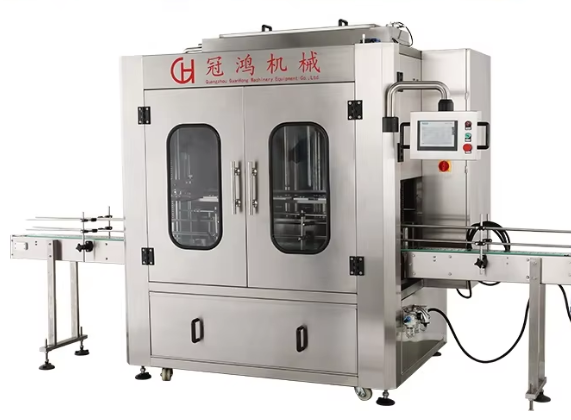Increased Production Speed and Efficiency with Automatic Liquid Filling
Higher Throughput Rates Compared to Manual Methods
Embracing automatic liquid filling systems can drastically increase production speed and efficiency. These systems are capable of handling multiple Products simultaneously, achieving throughput rates that vastly outperform manual methods. In fact, it's not uncommon for automatic filling solutions to double or even triple production outputs when compared to traditional manual practices. This efficiency is further amplified by the reduction of downtime, as automatic systems are designed to operate continuously without frequent interruptions. Consequently, companies that have integrated automatic liquid filling technologies have seen their output levels rise by as much as 50%, providing a crucial competitive edge in today's fast-paced market.
Reduction in Labor-Intensive Processes
Automatic filling not only boosts production speed but significantly reduces the dependency on manual labor. This change allows companies to reposition their skilled workforce to more critical tasks that require human oversight, such as quality control and innovative product development. By reducing the need for human intervention in repetitive filling tasks, businesses can streamline their production processes, efficiently managing operational complexities and bottlenecks. This strategic reallocation of resources not only boosts productivity but also fosters a more innovative and creative atmosphere within the production line. Adopting automatic systems represents a direct pathway to enhancing overall operational efficiency, enabling businesses to maintain competitiveness in an ever-evolving industry landscape.
Enhanced Precision and Consistency in Liquid Filling
Elimination of Human Error in Volume Measurement
Automatic liquid filling systems are designed with advanced sensors and software to measure exact volumes, virtually eliminating human errors often associated with manual filling methods. These automated systems can achieve filling precision rates of 99.9%, starkly contrasting with traditional methods where errors can reach up to 10%. Such accuracy ensures every container is filled correctly, significantly reducing the likelihood of underfilling or overfilling, which leads to increased customer satisfaction and fewer returns.
Uniform Fill Levels Across Production Batches
Automatic systems ensure consistency, providing uniform fill levels across all production batches, which is pivotal for maintaining brand quality. This uniformity helps companies comply with industry standards and regulations, safeguarding their reputation. Furthermore, research indicates that consistent fill levels reduce spoilage rates and enhance the shelf life of products, particularly in sensitive industries such as food and pharmaceuticals. By using automatic systems, companies can assure their products meet the highest quality and safety standards, ultimately boosting consumer trust.
Long-Term Cost Savings and Operational ROI
Lower Labor Costs and Resource Allocation
Implementing automatic liquid filling systems can significantly lower labor costs by reducing the number of workers needed to oversee production. Such systems allow for continuous operation without requiring constant human intervention, leading to a decrease in workforce expenses. Studies and cost analyses suggest that businesses could cut labor costs by about 30% after switching to automated solutions. This reduction in expenses allows companies to redirect financial resources toward other strategic initiatives, including research and development or market expansion, enhancing overall organizational sustainability.
Minimized Product Waste and Material Savings
Automatic liquid filling systems are engineered to optimize material usage, significantly reducing waste associated with overfilling or spills. With advanced technology, these systems ensure precise liquid measurement, minimizing excess usage of raw materials. As organizations strive for operational efficiency, automated systems can lead to material savings, with reports indicating a decrease in waste by as much as 20% post-implementation. Embracing automated filling solutions not only supports environmental initiatives through reduced waste but also enhances the bottom line of businesses by conserving valuable resources.
Improved Safety and Contamination Control
Reduced Human Contact with Sensitive Liquids
By utilizing automated systems, we drastically reduce human contact with sensitive liquids, crucially minimizing contamination risks and enhancing safety. Such systems limit human exposure to potentially hazardous substances, safeguarding worker health and complying with stringent safety regulations. This is especially critical in industries like pharmaceuticals, where adhering to strict contamination protocols is not only a best practice but a regulatory necessity. Automated filling solutions ensure a cleaner, safer production environment, aligning operational practices with health and safety standards.
Compliance with Strict Hygiene and Industry Standards
Employing automatic fill technologies aids in meeting the rigorous hygiene standards mandated by health authorities, ensuring full compliance. Regular audits and certifications become more straightforward, mitigating the risk of penalties while bolstering the company's reputation as a trustworthy brand. Meeting these industry standards not only strengthens customer loyalty but also paves the way for expanded partnerships and opportunities in heavily regulated sectors. Automated systems streamline compliance processes, allowing businesses to focus on growth and innovation within their industries.
FAQ
What are the benefits of using automatic liquid filling systems?
Automatic liquid filling systems increase production speed and efficiency, reduce labor-intensive processes, enhance precision and consistency, offer long-term cost savings and operational ROI, improve safety, and ensure compliance with industry standards.
How do automatic liquid filling systems improve consistency?
These systems provide uniform fill levels across all production batches and eliminate human errors in volume measurement, ensuring each container is filled correctly and consistently.
Can automatic liquid filling systems help reduce labor costs?
Yes, they can significantly lower labor costs by reducing the need for workers to oversee production, allowing businesses to save on workforce expenses.

